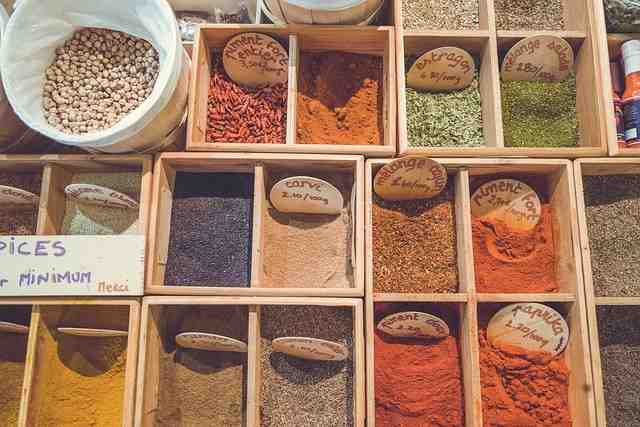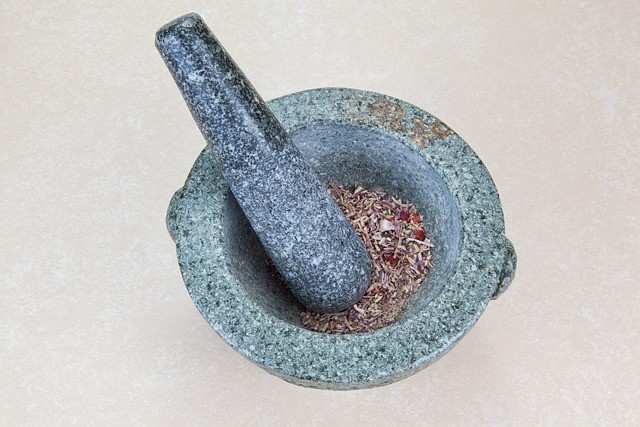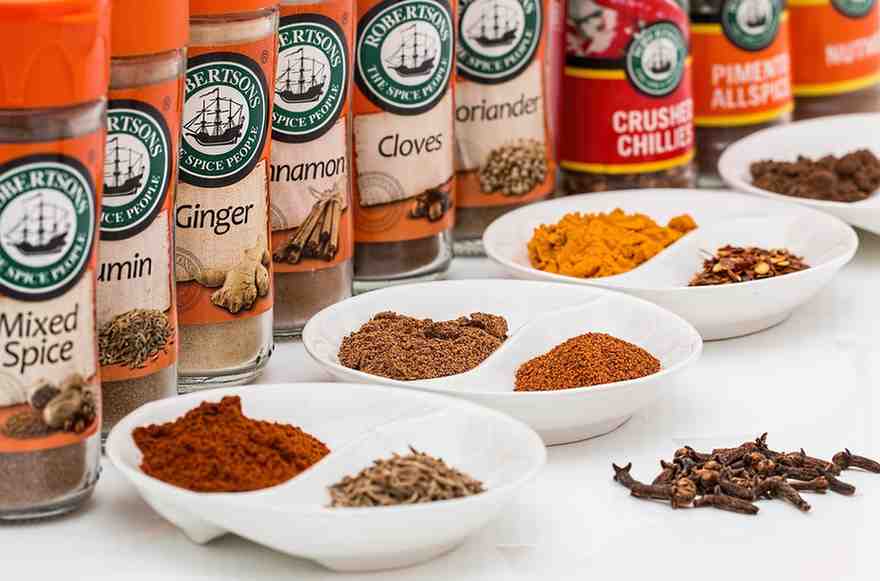Spices form the backbone of flavorful cooking, yet they lose potency over time if not stored properly. From retaining intense aromas to maximizing shelf life, preserving spices requires attention to detail. This guide explains the most effective techniques to keep your spices fresh, vibrant, and ready to elevate your dishes.
Why Proper Spice Storage Matters
Spices are delicate and prone to losing their flavor and aroma when exposed to unfavorable conditions. Improper storage can lead to diminished potency, clumping, and even spoilage. By preserving them correctly, you can:
- Maintain Vibrant Flavors: Essential oils in spices give them their characteristic aroma and taste. Protecting these oils ensures bold, fresh flavors.
- Reduce Waste: Fresh spices last longer, saving money and reducing waste.
- Enhance Cooking: Consistently using fresh spices elevates the overall quality of your dishes.
| Proper storage begins with understanding the factors that degrade spices and implementing solutions to counteract them. |
Factors That Affect the Shelf Life of Spices
Whole vs. Ground Spices
- Whole Spices: Retain their essential oils and flavor for 2–4 years. Examples include cinnamon sticks, nutmeg, and peppercorns.
- Ground Spices: Have a larger surface area exposed to air, causing them to lose flavor within 6–12 months.
| Opt for whole spices whenever possible and grind them as needed to extend their freshness. |
Environmental Conditions
Spices are sensitive to light, heat, moisture, and air. Each of these elements accelerates the breakdown of their essential oils.
- Light: UV rays from sunlight degrade spices rapidly. Store them in opaque containers or dark cabinets.
- Heat: High temperatures cause the oils to evaporate, diminishing flavor. Avoid keeping spices near stoves or ovens.
- Moisture: Humidity leads to clumping and mold growth.
- Air: Prolonged exposure to air oxidizes oils, reducing aroma and taste.
| Keep spices in airtight containers and store them in a cool, dry place. |

Best Practices for Storing Spices
Proper storage techniques are essential for preserving the flavor, aroma, and potency of spices.
Use the Right Containers
- Airtight Glass Jars: Ideal for maintaining freshness while protecting against moisture and air.
- Stainless-Steel Tins: Block light and keep spices cool and dry.
- Avoid Plastic Bags: These are less effective for long-term storage as they allow air and moisture to seep in.
| Always label containers with the name of the spice and the purchase or grind date to monitor freshness. |
Choose the Right Location
- Pantries or Cabinets: Dark, cool, and dry areas work best for spice storage.
- Avoid Heat Sources: Keep spices away from stoves, ovens, or microwaves, where temperatures can rise unpredictably.
- Drawer Storage: A spice drawer with organizers provides easy access while protecting spices from sunlight.
Prevent Contamination
- Use Dry Utensils: Always scoop spices with clean, dry measuring spoons to avoid introducing moisture.
- No Steaming Pots: Avoid shaking spices directly over steaming dishes to prevent clumping. Instead, measure out the amount you need in advance.
| Clean your spice containers regularly to remove residue and maintain freshness. |
Choosing the Right Spices for Freshness
Not all spices are created equal when it comes to longevity. Making informed choices can significantly extend their shelf life.
Opt for Whole Spices
Whole spices like nutmeg, cloves, and coriander seeds last much longer than their ground counterparts. They preserve their essential oils and provide a more robust flavor when freshly ground.
Purchase in Small Quantities
Buying spices in small amounts ensures that you use them while they’re still at their peak. Large containers often sit unused, leading to wasted flavor and money.
| Visit specialty spice shops or markets where you can purchase spices in smaller, fresher batches |
Grinding Spices for Maximum Freshness
Grinding spices as needed unlocks their full potential, as it releases the essential oils responsible for flavor and aroma.
Why Grind Spices Fresh?
Freshly ground spices offer a much stronger and more vibrant flavor than pre-ground varieties. Grinding also allows you to control the texture, from coarse to fine, depending on your recipe.
Tools for Grinding Spices
- Mortar and Pestle: This traditional tool provides precision and control for grinding small batches.
- Electric Spice Grinder: Perfect for efficiency when working with larger quantities.
- Manual Mills: Ideal for on-demand grinding, such as black pepper mills or nutmeg graters.
| Dedicate one grinder to spices and another to coffee to prevent flavor mixing. |

Best Grinding Practices
- Toast Before Grinding: Lightly toast whole spices in a dry pan to bring out their natural oils and enhance their aroma.
- Grind in Small Batches: Grind only the amount you need to prevent unused spices from going stale.
- Clean Your Grinder: Use uncooked rice or breadcrumbs to clean spice grinders and remove any residual flavors.
Protecting Ground Spices
Ground spices require extra care to maintain their freshness.
- Transfer Immediately: Place freshly ground spices into airtight containers as soon as they’re ground.
- Store Properly: Keep ground spices in a cool, dark location, and use them within six months for the best results.
| Avoid grinding delicate spices, like cardamom or cinnamon, too far in advance, as they lose their potency quickly |
Spice Storage Secrets: Maximizing Shelf Life and Aroma
Storing spices correctly is essential for maintaining their aroma and potency. Beyond preservation, understanding how to balance flavors and create spice blends can elevate your cooking to new heights. This section provides expert techniques for storing spices and creating blends that retain their essence over time.
Tips for Balancing Flavors in Spice Blends
Crafting a perfect spice blend requires an understanding of flavor profiles and how they interact. A well-balanced blend can enhance any dish, while poorly balanced spices can overpower or dilute flavors.
The Basics of Flavor Profiles
- Base Spices: These form the foundation of blends. Examples include cumin, coriander, and turmeric.
- Top Notes: Aromatic spices like cardamom, fennel, or ginger add brightness and complexity.
- Accents: Elements like chili, pepper, or cinnamon provide warmth, sweetness, or heat.
| Use a small amount of strong spices like cloves or nutmeg to avoid overpowering the blend. |
How to Craft a Balanced Blend
- Start Small: Begin with a 2:1 ratio of base to top notes, then adjust as needed.
- Grind Fresh Spices: Always grind individual spices before mixing for the freshest flavor.
- Taste and Adjust: Sample your blend as you go, testing it on small portions of food.
For example, in a curry blend, start with cumin and coriander as your base, then add cardamom and chili for complexity.
Best Practices for Storing Spice Blends
Blends are more delicate than individual spices, as mixing exposes more surface area to air. Proper storage ensures they remain fresh and aromatic.
Store in Airtight Containers
- Glass jars with screw-top lids are ideal for maintaining freshness.
- Vacuum-sealed bags work well for long-term storage, especially for larger quantities.
Protect from Light and Heat
- Keep blends in dark, cool cabinets to prevent light and heat from degrading essential oils.
- Avoid storing them near the stove or in open spice racks exposed to sunlight.
Pro Tip: Store spice blends in small jars to reduce air exposure as you use them.
Extending Shelf Life with Preservation Techniques
Storing spices properly isn’t the only way to extend their life. Additional preservation methods can help maximize flavor and usability.
Freezing Spices
- Whole spices, such as nutmeg or peppercorns, can be frozen in airtight bags to retain flavor for years.
- Freeze fresh herbs like basil, cilantro, or dill in ice cube trays with olive oil for easy use.
Pro Tip: Label frozen spices and herbs with the date and type for quick identification.
Making Infusions
- Spice-Infused Oils: Heat whole spices in olive oil to extract their flavors. Strain and store in sealed bottles.
- Spiced Salts: Mix coarse salt with ground spices for a versatile seasoning blend.
Creative Uses for Spices and Blends
Spices and blends can transform everyday recipes into culinary masterpieces. Here are some ideas for incorporating them into your dishes.
Flavor Boosters
- Add spice blends to soups, marinades, or rubs for depth of flavor.
- Sprinkle spiced salts over roasted vegetables, popcorn, or grilled meats.
Sweet Applications
- Mix ground cinnamon or cardamom into batters for pancakes, muffins, or cookies.
- Use warming blends like nutmeg and clove in desserts such as puddings or pies.
Pro Tip: Always experiment in small quantities to fine-tune flavor combinations.
Common Mistakes to Avoid
Even seasoned cooks can make mistakes when working with spices. Avoid these pitfalls to ensure your spices remain fresh and flavorful.
Overbuying Spices
- Buying large quantities may seem economical, but spices lose their potency over time.
- Purchase only what you’ll use within six months to a year.
Improper Sealing
- Failing to seal containers tightly exposes spices to air and moisture, causing clumping or loss of flavor.
- Always use airtight jars or bags for storage.
Ignoring Storage Conditions
- Placing spices near heat sources like stovetops or ovens speeds up degradation.
- Keep spices in a cool, dry environment to preserve their quality.
Pro Tip: Rotate your spices regularly, moving older ones to the front to ensure they are used first.
Frequently Asked Questions
How can I tell if my spices are still fresh?
Smell the spice—if it has a weak or musty aroma, it’s likely lost its potency. A quick taste test can confirm whether the flavor is still robust.
Can I use pre-ground spices in blends?
Yes, but grinding fresh spices before blending will deliver a more vibrant flavor.
What’s the best way to store freshly ground spices?
Transfer freshly ground spices to airtight containers immediately and store them in a cool, dark place.
Should I refrigerate my spices?
Refrigeration isn’t necessary for most spices, but chili powder and paprika can benefit from cool storage in humid climates.
Are there specific spices that lose flavor faster?
Delicate spices like nutmeg, coriander, and cardamom lose flavor more quickly than robust ones like cinnamon or peppercorns.

